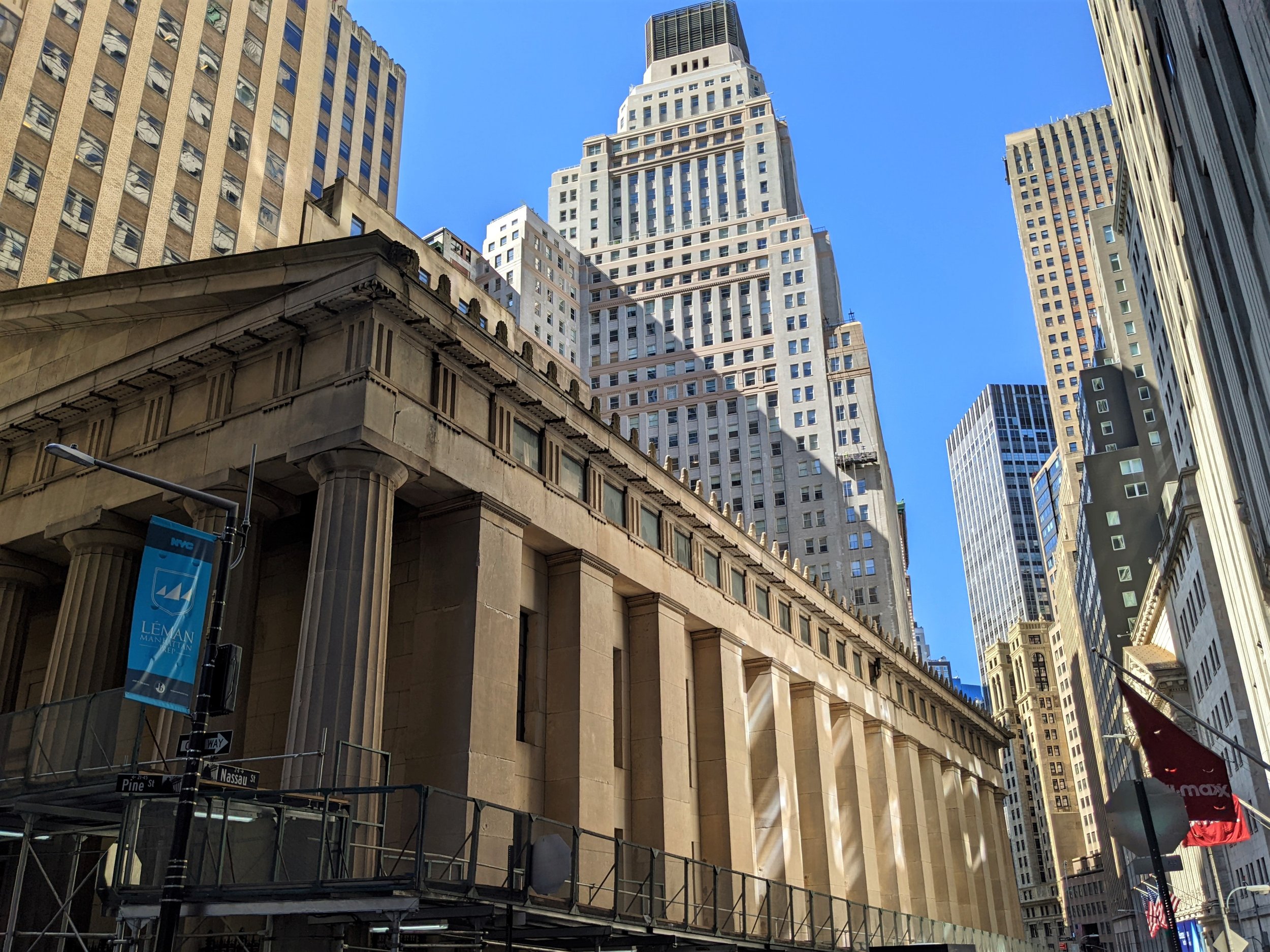Nestled on Wall Street among the skyscrapers of lower Manhattan sits a historic landmark which has been a major seat of local and national government since before the American Revolution. Originally the site of New York City Hall, this spot has been a center of political activity since the 18th century: the Stamp Act Congress was held here to protest “taxation without representation,” and in the wake of the Revolutionary War, it was where the shape of the new nation was decided. The Continental Congress, which at that point was known as the Confederation Congress, met here between 1785 and 1789. Following the ratification of the Constitution in 1788, New York City was proclaimed the first capital of the United States. The same building, now known as Federal Hall, was the location for George Washington’s inauguration as the nation’s first president. It was here that the first United States Congress, made up at that point of exclusively white, property-owning men, met in 1789 and wrote the Bill of Rights, expanding and defining some of the rights of offered in America. Federal Hall also witnessed the nation’s first lobbying campaign, as abolitionists voicing their opposition to slavery prompted the new government’s first explosive debate over rights in 1790. The balance of power between the federal and state governments was hotly debated in this building – a debate which continues to this day. This Independence Day, the echoes of this landmark building’s rich history and this nation, where rights and liberties have been altered and debated again and again, seem more relevant than ever.
New York City’s Federal Hall




